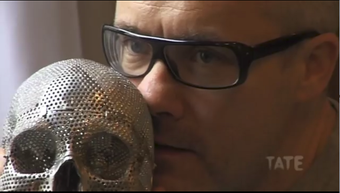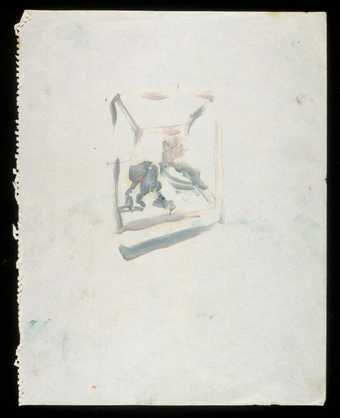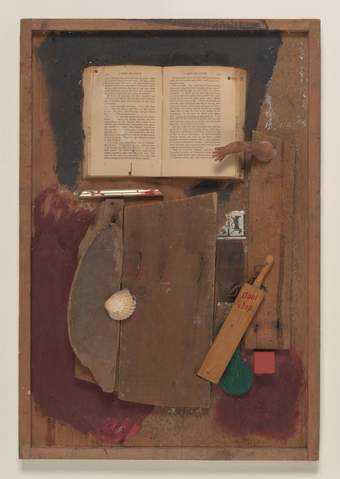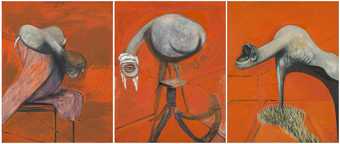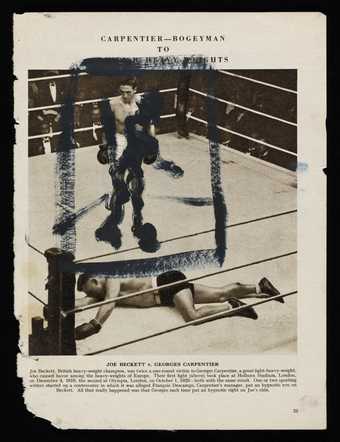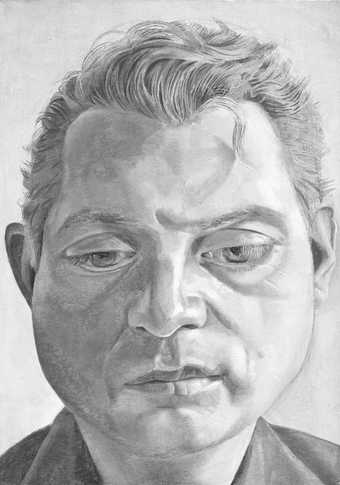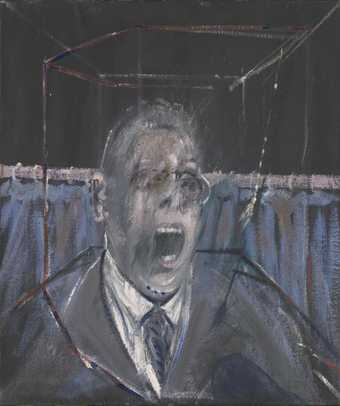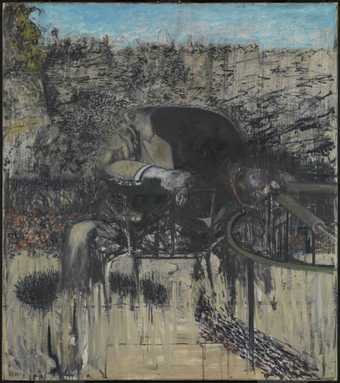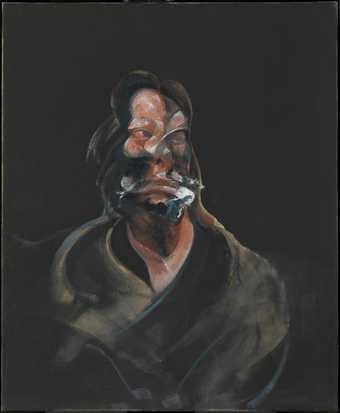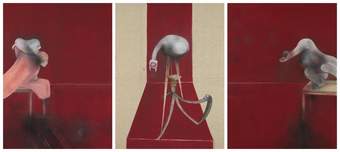We invited Damien Hirst to Tate Britain to see the Francis Bacon retrospective of 2008.
He tells us why he loves the Crucifixion and Head series': detail that vanishes the closer you get, paint like blood and guts. 'That's probably why I love Bacon paintings. When I first saw them they reminded me of places I'd seen in nightmares.'
I first came across Bacon when I was in the Art Library in Leeds City Art Gallery. I suppose Bacon is more like a kind of hero, or somebody who sort of survived a lot, whereas I think with a lot of artists you kind of get into them, and then you go off them; whereas Bacon I’ve always consistently loved his paintings, and love how they work. When I first came into contact with Bacon I was painting, and I kind of gave up because all my paintings were like bad Bacons. But I think all kids, all students, go through a period with Bacon where you just, you know, he becomes your favourite, I think, quite early on, because there is no-one really like him. I think he took it to a new level. Yeah… But the ones I like probably more are the larger triptychs. I mean like in this painting, when you look up close it just dissolves into a kind of abstract painting, and it makes you think of the horror of how fragile we are, I guess, or something like that. But yeah, I mean, these were probably my favourite paintings when I was a kid; this one and that one. The two Crucifixions. And probably the central panel of that one is the most horrific and the most I remember. You know, paint is pretty visceral; it does look like… you know, it’s like… that splat over the head of the brush is definitely like brains. The little circle round a piece of paint that makes it look like an eye. I think all great paintings, we have to look from a distance; they have to look, you know, look kind of representational, but when you get closer it needs to dissolve, so you just… so you know that it’s your mind sort of creating the horror; the viewer’s mind, rather than the artist’s ability. But you know, these paintings, it’s like, I mean this is like a powerhouse of a painting really. It’s like, you know, it’s unbelievable, and it really makes you think that we are here for a good time, not a long time. It’s… you know, we’re made of fragile stuff. Bacon paintings are always enigmatic, and they hit you on a kind of gut level, so they always kind of shock you. Or they shocked me when, you know, when you get them first of all. As an artist, I mean, my work as well, you just look for universal triggers; so you are always looking for something that will trigger something rather than an actual interpretation. After you walk away from a painting like this, it stays in your mind for a long time afterwards, you know. Days, if not years. I think he liked one piece that I made, but I suppose if I was being really brutal, I would say that my work could be divided into – say I made four good pieces, and Bacon probably only liked the one piece – which was the Fly piece. But then, that was me sort of trying to do a three-dimensional Bacon painting, because obviously I was thinking of Bacon very early on. And then when I went into sculpture – and I think that was directly in relation, or in reaction to Bacon’s work – and then I got called from the Saatchi Gallery that said he’d been in the gallery and stood in front of the piece for an hour. But I don’t know if… I never thought it was true, but then a letter surfaced recently where he said he’d seen a sculpture by me and that it worked. But you know, from Francis Bacon, who notoriously didn’t praise people, that was quite a big thing to say, I reckon. So these paintings I really love: the Heads. I saw this when I was a student somewhere. Maybe it was in a museum or a group show. But I remember looking and seeing that the ear on it, and seeing that he had painted the ear so many times that it actually becomes three-dimensional, so it’s like a real ear; it has this whole shape of an ear like the ridges in it, just the same as an ear. And I remember being shocked that a painting can – you know, that the illusion of a painting is a two-dimensional thing, so it can become a three-dimensional thing, and it’s like a ghost and it’s alive, and it’s dead. But I just love, you know, all the things it raises, and it kind of pulls you in, in some way. You can’t look at it, and you can’t not. I think Bacon is on his own, really. I mean, he had a very, very dark view of the world. I mean, I would hope that I was maybe more of an optimistic person; but I definitely get dark moments where I look at the world in the way that Bacon did. And that’s probably why I love Bacon paintings, because when I first saw them, they reminded me of sort of spaces I’d imagined in nightmares – which is why he’s great.

